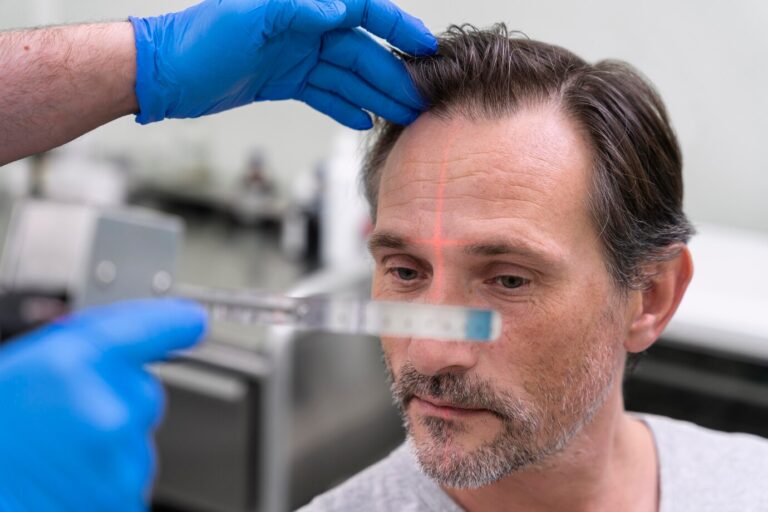Hair loss can deeply affect confidence and self-image, impacting both men and women alike. The good news is that ongoing advancements in hair transplant technology have made hair restoration more accessible, natural, and effective than ever before. From refined surgical techniques to cutting-edge devices, today’s options offer exciting possibilities for those seeking to reclaim their hairline.
What is a Hair Transplant?
A hair transplant is a cosmetic procedure that involves moving hair follicles from a donor area, typically the back or sides of the scalp, to an area where hair is thinning or has been lost. This method allows for the growth of natural, permanent hair in the new location. Over the years, hair transplant techniques have seen significant advancements, vastly improving outcomes for patients.
- Follicular Unit Extraction (FUE): This minimally invasive technique involves extracting individual hair follicles directly from the donor area and implanting them into the target region. Since FUE doesn’t involve large incisions or stitches, patients experience quicker recovery times and minimal scarring.
- Robotic Hair Transplant Systems: These advanced tools use artificial intelligence to assist surgeons in identifying and extracting the best-quality hair follicles, improving precision and efficiency. Robotic systems also help minimize trauma to the donor site, reducing recovery time and enhancing overall results.
- Sapphire FUE: A more recent innovation within the FUE technique is Sapphire FUE, which uses sapphire blades instead of traditional steel for creating incisions in the scalp. The sharpness of sapphire blades allows for more precise graft placement, leading to faster healing times and reduced trauma to the recipient area. Additionally, Sapphire FUE helps create highly natural results by enabling surgeons to achieve denser hair patterns.
- Direct Hair Implantation (DHI): Unlike traditional methods, DHI involves the use of a specialized implantation device that simultaneously creates incisions and implants hair follicles. This eliminates the need for pre-made incisions, allowing for more controlled and accurate placement of each follicle. DHI is renowned for delivering natural and high-density results, particularly in smaller transplant areas.
Improved Aesthetics and Natural Results
The primary goal of modern hair transplants is to restore hair in a way that looks both natural and seamless. Surgeons now pay close attention to recreating the direction, angle, and density of hair growth for a realistic appearance. Additionally, advancements in anesthesia techniques and post-operative care have made the patient experience much more comfortable compared to earlier methods.
While the advances in hair restoration are exciting, the suitability of a hair transplant depends on individual factors such as the extent of hair loss, donor area availability, and overall health. Consulting with a qualified hair restoration specialist can help patients determine the best course of action tailored to their needs.
The Future of Hair Restoration
Innovations in hair restoration technology show no signs of slowing down. Areas like stem cell research and bioengineering hair follicles hold even greater promise for those facing hair loss, offering hope for a future filled with restorative possibilities. For anyone navigating the challenges of hair loss, today’s advancements in hair transplant procedures provide a path to regaining both hair and confidence.

